Hazard management in mining is fundamental to the safe operation of a mine. Despite a higher than average percentage of workers in the mining sector undertaking formal occupational health and safety training and applying critical risk management practices, the industry still records the second-highest relative workplace fatality rate in the nation.
Similarly, the mining industry also registers a significantly higher than average injury comparison rate, with Safe Work Australia reporting that over the most recent three year period, serious or fatal injuries arose most commonly from vehicular accidents (31%), being hit by a moving object (14%) and slides or cave-ins (10%).
With mine safety conventions traditionally developed and administered by individual states, the move towards a National Mine Safety Framework has endeavoured to entrench uniformity, consistency and collaboration within the industry’s occupational health and safety regime.
This mirrors Safe Work Australia’s development of an overarching national workplace health and safety regime. As the administrative process of harmonising state-administered mine safety conventions into a national protocol progresses, we review a range of potential mine safety hazards and consider a range of practical views on best practice to manage these.
There are a range of hazards in mining operations. We have outlined several of the major hazards below.
READ RELATED CONTENT
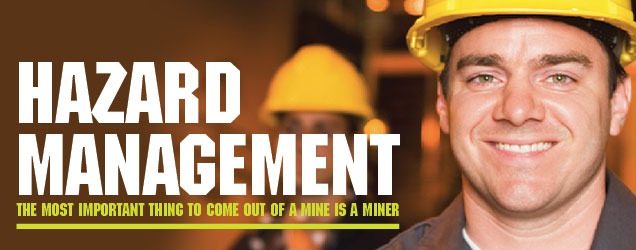
- EARS TO THE GROUND | NOISE IN THE MINING INDUSTRY
- HEALTH HAZARDS IN COAL MINING
- MINERS AT WAR
- TIPS FOR FATIGUE MANAGEMENT IN THE WORKPLACE
- KILLED IN THE LINE OF DUTY | THE NEED TO FIX LOOPHOLES IN THE LAW
Types of hazards in mining
Ground / strata instability hazard management
A 2008 American study identified a number of causal factors for ground and strata instabilities, noting that structural instabilities often resulted from rapid changes in geologic structures, major discontinuities with these structures, damage to the structures from mining activities themselves, in addition to the pernicious effect of excessive groundwater, particularly when coupled with inferior ground control.
The study also noted that human factors such as inadequately designed supports or incorrect installation of supports, often resulting in high horizontal stress, also created hazards to miners on site. The report advocated the imperative to identify such geotechnical risks and to institute appropriate risk management measures as the primary safety control factors to combat potential hazards.
There are three essential components of an effective ground control program: “(1) systematic coordination of geologic structures and stress parameters, (2) state?of?the?art entry and pillar design consideration, and (3) a sound plan of ground support and reinforcement action.” This conclusion is both supported and complemented by local data, with the inquiry into the Beaconsfield Mine rock fall noting that the monitoring of, and response to, seismic activity functions as a necessary additional protective factor, as is the necessity of constructing ground supports equipped to contain stresses well in excess of predicted levels.
A strategic and considered approach to risk management operates as the fundamental mechanism to averting hazards arising from ground or strata instabilities. This strategic approach to ground control risk management was strongly advocated at the 28th International Conference on Underground Mining with discussions surrounding the introduction of the recently developed Roof Fall Index Mapping (RFIM) software as a new predictive methodology to enable clearer identification of potential risks.
In Australia the Mineral Industry Safety and Health Center (MISHC) developed a model and framework for Mineral Industry Risk Management (MIRM). The Mineral Industry Risk Management Gateway (MIRMGATE) is maintained by MISHC and offers a host of tools for assessment, analysis, control, and mitigation of risk.
Inundation and inrush hazard management
Inundation and inrush are defined as “an ingress of liquid, gas or other substance with the potential to create an emergency situation and create a risk to health and safety of mineworkers”. An inundation or inrush hazard may include any the following: significant quantities of water or other fluid material; any material that flows when wet; flammable or toxic gases held under pressure in strata (as determined by application of the GHS or dangerous goods classification); backfilling, ore passes or hydraulic filled stopes; unstable ground or strata that has the potential for an airblast or windblast; water storage dams, tailings dams or waste dumps, and open pit slopes or hills. These hazards can be pressurised and swiftly flow or release into or within a mine.
The primary source of preventative hazard management resides within the planning process, with the considered identification of potential inundation and inrush sources forming the central criteria of a risk management assessment. These potential sources are many and varied, including, but not limited to: inrush hazards from abandoned mines; current workings of an adjacent mine; existing workings of the current mine; hazards in other seams or strata, ore bodies or ground; from non-mining, man-made structures and from surface bodies of water.
The practices of identifying potential inundation and inrush hazards, complemented by the determination and actioning of necessary controls, operate as the primary methodologies for hazard prevention, with Safe Work emphasizing the primacy of a conservative approach to controlling the potential risk. There are five preventative measures recommended by Safe Work for addressing inundation and inrush hazards: eliminate the hazard by removing the damaging energy (for example, water, materials); minimise the magnitude of the hazard (for example, less water, less pressure); minimise the likelihood of the event through engineering or “hard” barriers; minimise the likelihood of the event through procedural or “soft” barriers, or minimise likelihood through warnings. Again, applying a strategic approach to risk management, through the anticipation of all possible scenarios, functions as the best way to avoid an incident arising from these hazards. Examples of inundation disasters in Australia include the Gretley Mine Disaster of 1996
Mine shafts and winding operations
There is no denying that the mine shaft is the lifeline to an underground mine, with miner safety critically dependent upon the reliability of the hoist system.
Whilst current technology enables accurate monitoring of the position of the conveyance and the tension in the hoist rope, other variables come into play which may impact upon the safety of the hoist system. According to US research on hoisting systems by Beus and Iverson; poor ground conditions and excessive shaft displacement; rock bursts in deep mines; water, ice and salt build up and severe vibration from hoisting may all potentially compromise the efficiency of the hoisting system. It is through accounting for these types of variables that successful risk management plans ensure not only the ongoing functionality of the hoisting system but maintain worker safety as the paramount consideration.
Roads, other vehicle operating areas and traffic management
An assessment of Health & Safety in Mining Issues for a new millennium has noted that “half the world’s fleet of 10,000 mining trucks have a capacity exceeding 170 tonnes” in its review. With this increased vehicle capacity in mind, in a review of the productivity of mining haul roads, it is noted that not only is the provision of appropriate traffic surfaces for the ultra class of vehicle used in mining haulage a consideration for worker safety, it also benefits the mine owners economically to invest in premium traffic way construction in order to reduce excessive costs associated with compromised road surfaces. Factors such as an increase in cost per ton hauled, as well as indirect costs such as reduced production rates and vehicle and component service life can all reduce the profitability of mining operations.
Evidence has also revealed that despite incident rates in the mining sector declining in response to improved safety conventions, the severity of accidents involving these transport giants has increased. In the review it is suggested that human error is complicit in this increase, with a failure to adequately respect the potential for damage that these trucks are capable of, and emphasises the need for the industry to instil a culture of education and safety, with an emphasis on traffic protocols, as a means to modifying behaviour and reducing the incident rate. With the highest injury rates in the mining sector resulting from vehicular accidents, this is sage advice for both mining safety officers and mining workers who operate these behemoths.
Air quality, airborne dust and other contaminants
The World Health Organisation (WHO) advocates that workers should be separated from potential airborne hazards through containment (or isolation) from the source or ventilation to remove the dusty air before it reaches the worker.
Containment or isolation consists basically of placing a barrier between the dust source and the workers, the WHO recommended that it is preferable to control at or close to the source, so enclosure of the source is preferable to the enclosure of the worker.
Enclosure of just one worker allows a continuing risk of exposing others, and of contaminating the environment. Source enclosures are usually coupled with exhaust ventilation so they are kept under negative pressure; in this way contaminants are removed from the workplace, and any leakages are from the workplace into the ventilation system, so that dusty air does not re-enter the workplace. The use of these measures is also coupled with air quality monitoring systems, as ventilation systems are recognised as not always being ‘fool proof’. Constant monitoring of air quality ensures that, in the event of ventilation failure, workers are informed and safeguarded from exposure.
The differing degrees of risk posed by airborne particles often make the enforcement of containment technologies a difficult process, as there are misconceptions regarding the types of dusts that pose a hazard to workers. The WHO notes that workers often ignore scientific research which informs of health risks associated with specific dusts, citing the example of the nominal consequence of limestone dust exposure whilst emphasising the toxicity of exposure to granite, grit stones or sandstone dusts which contain high levels of free crystalline silica.
According to the report, the fact that “the most dangerous dust fraction may be largely invisible under normal light further aggravates the lack of awareness of the problem”, means the onus then rests on mine owners to implement proactive hazard education supported by the implementation of hazard reduction processes.
Fire and explosion
Fires and explosions in the mining industry have been prevalent in both open-cut and underground mines. The Queensland Mines Inspectorate reports that of a total of 228 fires recorded in the 12 months to July 2007, a whooping 161 (71%) of these related to vehicular fires. This data is reflective of outcomes across the mining sector, with a rise in the number of safety issues arising from the increasing number of vehicles on site.
Former Queensland Chief Inspector of Mines, Gavin Taylor, once stated that a number of commonplace hazards are predominantly causal to vehicular fires in diesel engines: heated surfaces; heat-affected pressurised oil and fuel lines and loose or leaky components resulting from vehicular vibration. Mr Taylor advocated for greater vigilance to be exercised in the maintenance of vehicles, observing that the routine replacement of hoses before imminent failure and change out of critical components, such as the turbocharger, are simple and easily achieved preventative measures.
With the potential for mine explosions most possible in underground coal mining ventures, viz the Sago mine explosion in the United States, the Moura No 2 explosion in Queensland and the Pike River event in New Zealand, ACARP (the Australian Coal Association Research Program) conducted a study into best practice risk management practices to prevent the occurrence of a similar event.
The study identified three risk management approaches adopted by Australian mines: 1. constant, ‘real time’ atmospheric monitoring; 2. the maintenance of inert gases (commonly CO2, jet or diesel engine exhaust and nitrogen) which act to prevent the development of combustible gas concentrations and 3. the installation of well engineered seal structures as a remedial containment solution to minimize the likelihood of combustible gas concentrations forming. The Australian approach, which adopts a preventative regime, differs considerably from the US approach which is almost exclusively reliant on the installation of seals as a containment solution, complemented only by periodic ‘bag’ sampling of atmospheric conditions rather than use of real time monitoring systems. In fact, the ACARP study critiqued this approach as an inferior hazard reduction approach, acting as a ‘guard’ against failure, rather than the proactive, preventative, risk management measures currently adopted by Australian mine operators.
Gas outbursts
Gas outbursts, a violent ejection of a large volume of noxious or flammable gas from a working face area, occur most frequently in coal seam mining. The preferred method for reducing the risk of gas outbursts is in-seam gas drainage – the drilling of boreholes into the coal seam prior to mining in order to enable to controlled extraction of coal gases and reduce the risk of unpredicted gas expulsion. Chinese researchers, however, have developed a method for predicting the probability of coal and gas outbursts based upon the geological structure of the seam and the stresses under which it has been formed. Through the use of their probability model, mining operators are able to develop their mining strategy, informed by the predicted schematics of the geological features of the seam and the potential for outbursts to occur.
Ionising radiation
Ionising radiation (any radiation capable of displacing electrons from atoms thereby producing ions) is derived from naturally occurring radioactive materials (NORM) in mining, with debate over whether this actually constitutes a primary hazard for miners, per se, given that levels of exposure are, on average, lower than the recommended safe levels. Exposure to high doses of ionising radiation can cause skin or tissue damage.
The complication in this debate is that radiation is cumulative and the impact of chronic low levels of NORM over time is as yet undefined. Adopting a conservative approach, ARPANSA (Australian Radiation Protection and Nuclear Science Agency) advocates that any risk assessment of potential radiation exposure must work on the principle that any amount of radiation exposure, no matter how small, can increase the chance of negative biological effect.
Therefore the principle of ‘As Low as is reasonably Achievable / Practical (ALARA / ALARP)’ is expected to be applied. Safe Work includes this concept within the Workplace Health and Safety legislation, stating that worker exposure to radiation and radioactive materials in the workplace fall under the duty of care of the employer and that the employer has a responsibility to take all reasonable precautions to minimise risk of exposure.
There are three preventative principles which guide workplace radiation minimisation: Time, Distance and Shielding. Time refers to the limitation of potential exposure time; Distance refers to reducing exposure by increasing an individual’s distance from the source, whilst Shielding implies that the greater the shielding in place around the radiation source, the less exposure experienced by workers. Further risk minimisation can be achieved by dust suppression, ventilation, washing before eating, cleaning of contaminated vehicles and equipment.
Other elements of risk, not included in Safe Work’s definition of principal mining hazards, albeit still recognised as potential hazards to mining workers are:
Electricity hazard management
There are three specific hazards associated with electricity in mining: 1) electrical shock, 2) electrical arc-flash and 3) electrical arc-blast.
It takes only a nominal electrical current to cause irreversible harm to the human body, with currents higher than 25 mA potentially fatal. Electrical arc-flashes present a two-pronged risk, with arc temperature and incident energy presenting different issues with relation to damage, whilst arc-blats generating overwhelming pressure. Where the arc flash flame can cause ignition of clothing and third degree burns, it only takes a low level of energy for second degree burns.
Contemporary synthetic fibres like polyesters and nylons compound the burn damage, often melting onto the skin. The use of fire retardant clothing is essential when working with electricity.
Confined spaces
The hazards of working in confined spaces are many and varied including limitation in entry or exit, the potential for exposure to toxic fumes or gases, the potential for engulfment by substances or liquids as well as the potential for flammable concentrations of combustible gases. Workplace safety guidelines emphasise the need for the identification of all confined spaces on site, the extensive training of all employees required to enter such confined spaces, appropriate ventilation where possible or the provision of breathing apparatus where ventilation is not practicable.
Implicit within all hazard reduction measures is the need to address worker behaviours through extensive education, support and communication of safety protocols. The nature of the beast is such that we act on impulse, often before consideration of the potential consequences. Technological and procedural safety measures can only act as preventative measures insofar as they are appropriately applied by the workers. As Jennings has observed, “the past focus on engineering and technical developments as a means to improve occupational health and safety was very successful. But such an approach is providing diminishing returns in many countries. Behavioural safety is the key to effective accident reduction.” In the case of all hazards, however, the adoption of a conservative approach when preparing risk management safety plans allows for the anticipation of a worst case scenario and provides for optimum safety standards.
Working at height hazard management
Working at height presents a risk of the worker falling as well as the risk to those below of falling materials. Recommended hazard reduction protocols include the provision of guardrails and enclosures on elevated work platforms, in addition to the provision of ‘fall-arrest’ equipment, the introduction of barricades around and below the immediate work area to prevent the possibility of objects falling onto people below. These protocols are not just specific to the mining industry but are integral to national work safety regulations for all sites where workers are at heights.
The mining industry still records the second-highest relative workplace fatality rate in the nation, writes Corrina Trimarchi.


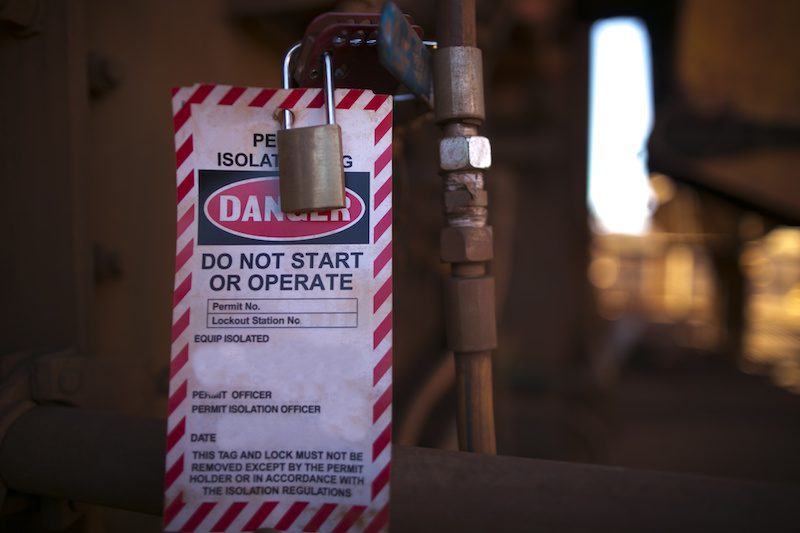
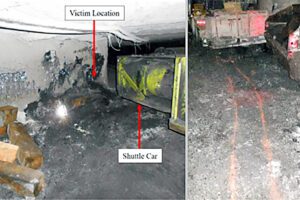
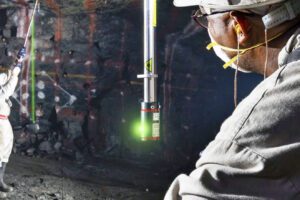
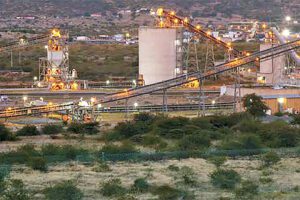








Hmmm. If you define a hazard as “anything with the potential to do harm”, I defy you to describe anything that doesn’t have the potential to do harm…
ALARP and SFARP both rely on defining “reasonable” – a matter for the common law, and capable of change. How then, can the worker or the proximal supervisor define what is reasonable at the time?
If safe is “the level of risk you are prepared to accept”, how do you calibrate the lone worker’s definition at any point in time?
A fundamental issue in safety science is the matter of accepted, accurate, and discrete, definitions. Without that, we do not speak the same language. This article, to me, anyway, confuses hazard with consequence (e.g. slips, trips and falls, where a slip is one mechanism, a trip is a different mechanism, and a fall is an outcome of both). Maybe we need a serious conversation on these axioms to effect real change?